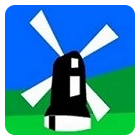Art and Design Technology
Art
INTENT
We have ensured clear themes for Art across the school from Foundation Stage to Year 6. Our intent ensures that children are exposed to rich cultural capital and to diversity through a creative and broad Art Curriculum. We encourage self-expression and creativity to build confidence and a strong sense of independence and individuality.
IMPLEMENTATION
We implement our Art curriculum through a clear overview and progression in skills from foundation stage to year 6. Our Art curriculum celebrates diversity through a variety of artists and mediums that our learners focus on, for example in Year 5 children study the art work of Amy Sherald, Year 3 children study Inji Aflatoun.
The curriculum seeks to celebrate traditional and modern artistic cultural capital as well as diversity within creativity. Our Art learning inspires our learners through links to other areas of the curriculum (where this applies), for example English, Maths, History and Geography. We ensure that the children have extended chunks of time to produce their Art learning in order to secure depth of learning and mastery of skills in these subjects.
Learning is brought to life through school trips and learning experiences: In early years, children use the Forest School environment to make pictures from natural materials. In Year 2, children work collaboratively to produce a large-scale mixed picture in the style of Hokusai. Year 3 make prehistoric cave paintings using the texture of sand, the atmosphere for creativity is set by making caves from their tables and painting their pictures on the underside. Year 6 visit the British Museum and then create a frieze based on Theseus and the Minotaur in clay.
IMPACT
Through our teaching and learning in Art we challenge, we inspire and we ensure children achieve:
-
Learners will use technical vocabulary accurately and know, apply and understand the matters, skills and processes specified
-
Learners will become more confident in analysing their work and giving their opinion on their own and other works of art
-
Learners will make develop an understanding of how to make links to computing through art
-
Displays reflect learners’ sense of pride in self-produced artwork.
Design Technology
INTENT
We have ensured clear themes for DT across the school from Foundation Stage to Year 6. Our intent ensures that children are exposed to rich cultural capital and to diversity
through a creative and broad DT Curriculum. We work to a plan, do, review model to encourage trial and error.
IMPLEMENTATION
We implement our DT curriculum through a clear overview and progression in skills from foundation stage to year 6. Our DT learning inspires our learners through links to other areas of the curriculum (where this applies), for example English, Maths, History and Geography. We ensure that the children have extended chunks of time to produce their DT learning in order to secure depth of learning and mastery of skills in these subjects. Our DT curriculum has a clear process from careful design through to the end product.
We ensure the children are exposed to diversity in DT through making links to other curriculum areas. For example, in Foundation stage the children design, and make Diwali lamps from clay. In Year 2 children make onigiri rice balls and design and make Japanese flip flops (geta). In Year 5 children make Mexican tacos and churros. In Year 6 children make a Greek salad and design and make 3-D Parthenon models.
We bring learning to life in DT through experiences , for example in Foundation stage children used their own Diwali lamps in a procession where they sang a Diwali song then sat together to drink mango lassi that they had made themselves. In Year 5, the children prepare a Christmas meal to which they invite their parents.
IMPACT
Through our teaching and learning in DT we challenge, we inspire and we ensure children achieve:
-
Learners will use technical vocabulary accurately and know, apply and understand the matters, skills and processes specified
-
Learners will become more confident in analysing their work and giving their opinion on their own and other’s products
-
Learners will make develop an understanding of how to make links to computing through DT
-
Displays reflect learners’ sense of pride in their own products.

